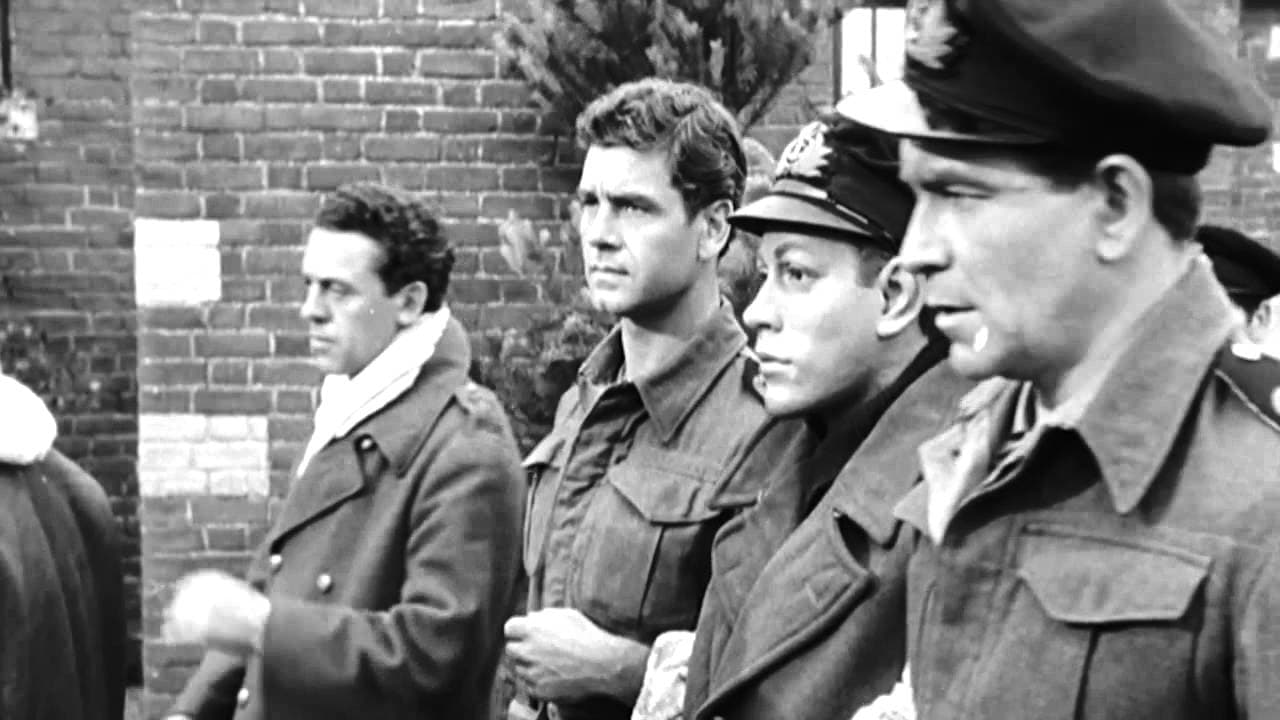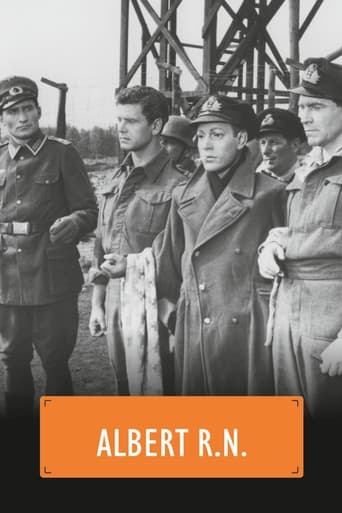

"Albert, R.N.," aka, "Break to Freedom," is a very good British POW film set during World War II. The film opens with a prologue, "The events concerning Albert are based on fact, and took place in the prison camp, Marlag "O," for Naval Officers in North West Germany, during the spring of 1944." Indeed, two former POWs wrote a play about this POW camp and events, and the movie screenplay was based on that. The term, marlag, is an abbreviation of Marinelager (navy camp), and these were prison camps for sailors and naval officers. The "O" designation was for officers. The prisoners at this camp were mostly British naval officers, with some American and other U.K. naval officers. Marlag "O" was located near Hamburg, Germany, and in a couple of scenes of night Allied bombing, the POWs refer to Hamburg getting hit again. The Milag (internment) camps held the many Merchant Navy and Merchant Marine seamen. They were divided also between officers and men. Most of the 5,000 Allied merchant seamen rescued and captured by the Germans were held in Milag North. American shipment of war materials, supplies, and combat forces was all done by the Merchant Marine. The Marlag and Milag camps were about 1,000 feet apart, and between them was a large block of showers that was used by both camps.The characters in this story and film are fictitious, though they resemble some of the men who were at Marlag O. Anthony Steel plays Geoff Ainsworth, the artist who designed the mannequin face of Albert. He is patterned after John Worsley a war artist. Two British officers helped with Albert. One made the body and the other made it so Albert's eyes would blink and move. The real story came out different than this film shows. The first escapee (Lt. William Mewes) wasn't killed. He was recaptured and returned to Marlag. The second escapee was captured in the shower building, as shown in this film. There was no third attempt because the Germans discovered Albert and destroyed the mannequin.After the war, artist Worsley made another Albert for use in making this film. He also made another for an exhibition of his work, and it later went to the Royal Naval Museum at Portsmouth. In the movie, Lt. Fred Erickson (played by Paul Carpenter) says, "Nice work Geoff. After the war, you come to Hollywood. We've got just the job for you – making stars look like people." The film itself comes off a little stagy at times, but the compelling story keeps that from detracting from the film. This is a good historical movie because it shows a POW camp specifically for naval officers. The sea-going prisoners were treated quite differently than were the Army prisoners in the many regular POW camps.
... View MoreIn order to pass a head count or roll-call, even though one of their number is engaged elsewhere in an escape attempt, ingenious PoWs create a like-like dummy they name 'Albert'.The events in the film are based on real events in 'Marlag O', a PoW camp for naval personnel in Northern Germany. John Worsley -the only war artist to be captured during WWII- together with others including Lt JW Goble, created the first 'Albert' who was used in the course of two escape attempts. This 'Albert' was surprisingly sophisticated, even having eyes that were made from ping-pong balls, connected to a pendulum device so that they would blink.Worsley made a second 'Albert' for this film, and Goble worked on the film as a technical assistant.'Marlag O' was not the only PoW camp where such dummies were used; amongst others, dummies (named 'Moritz' and 'Max') were made and used in Colditz (Oflag IV-C). If you visit Colditz Castle today, you can see one of these dummies in the PoW museum there; less convincing by far than the one in the film, the one in the museum in reality worked well enough to pass 'Appel' on several occasions.Some aspects of the film are perhaps not so realistic; for example it was common for prisoner's huts to be bugged with listening devices, so in many camps any escape attempt discussions would only be carried out whilst 'exercising' outside. However the film makers did work to give the characters more than two dimensions; in one scene we see into the minds of the prisoners as they rest in a quiet moment; their hopes, dreams and prayers are each voiced in turn. Overall the film holds up well despite a relatively modest budget.This film might ultimately lack the 'hook' of 'The Wooden Horse' or 'The Colditz Story' but it is a pretty sound effort, and is worth seeing.
... View MoreALBERT, R.N. is a very good British WW2 prisoner of war movie which has a story so incredible it must be true. It features an naval officer and his men who are determined to escape from their camp in Germany at any cost, and devise one of the most audacious plans in history to facilitate their freedom. This suspense-packed narrative subsequently follows their adventures with many highs and lows along the way.I've always loved a good prison film and this one offers something a little different; the prisoners are actually well taken care of and have plenty of camaraderie in their living quarters. Nonetheless the escape attempts are enthralling and often jaw-dropping in the way the simplicity of the thing works so well - you can't believe what you're seeing.I also like the way that the writers take the time to develop the individual characters to more than just walking stereotypes. Anthony Steel is particularly good as the conflicted newcomer, but he's given fine support by Jack Warner as the friendly captain. Anton Diffring has one of his best early roles as a ruthless and mercenary German officer. In support, the viewer is treated to the likes of Eddie Byrne, Michael Balfour, William Sylvester, and Paul Carpenter, all of whom are very fine in their parts. ALBERT, R.N. is something of a forgotten classic of its type and a film that more than holds its own against the bigger budget Hollywood tales.
... View MoreOne of the better of the rash of pow camp films that came out of the UK in the late 1950's. The film is set in a Nazi pow camp where a group of Royal Navy prisoners come up with a novel means of escape. They produce a life-like dummy that breaks down into small pieces. Several of the men hide the pieces under their coats when they are marched outside the wire for the weekly shower. Once inside the shower room they put the dummy back together. While one man stays behind the rest march back to camp carrying the dummy between them. The guards take a head count which of course matches the number of prisoners who left earlier. The gag works and the Germans are fooled. Only problem is the escapee is caught and shot. They plan to keep pulling the same trick again till one of them makes good his escape. Director Gilbert keeps this one moving right along while getting the best out of the cast and crew. The prisoners include Anthony Steel, Jack Warner, Robert Beatty and Paul Carpenter. The best role in the film goes to Anton Diffring who does his best Nazi SS officer bit. Diffring made a career out of playing nasty German officers. Well done!(b/w)
... View More